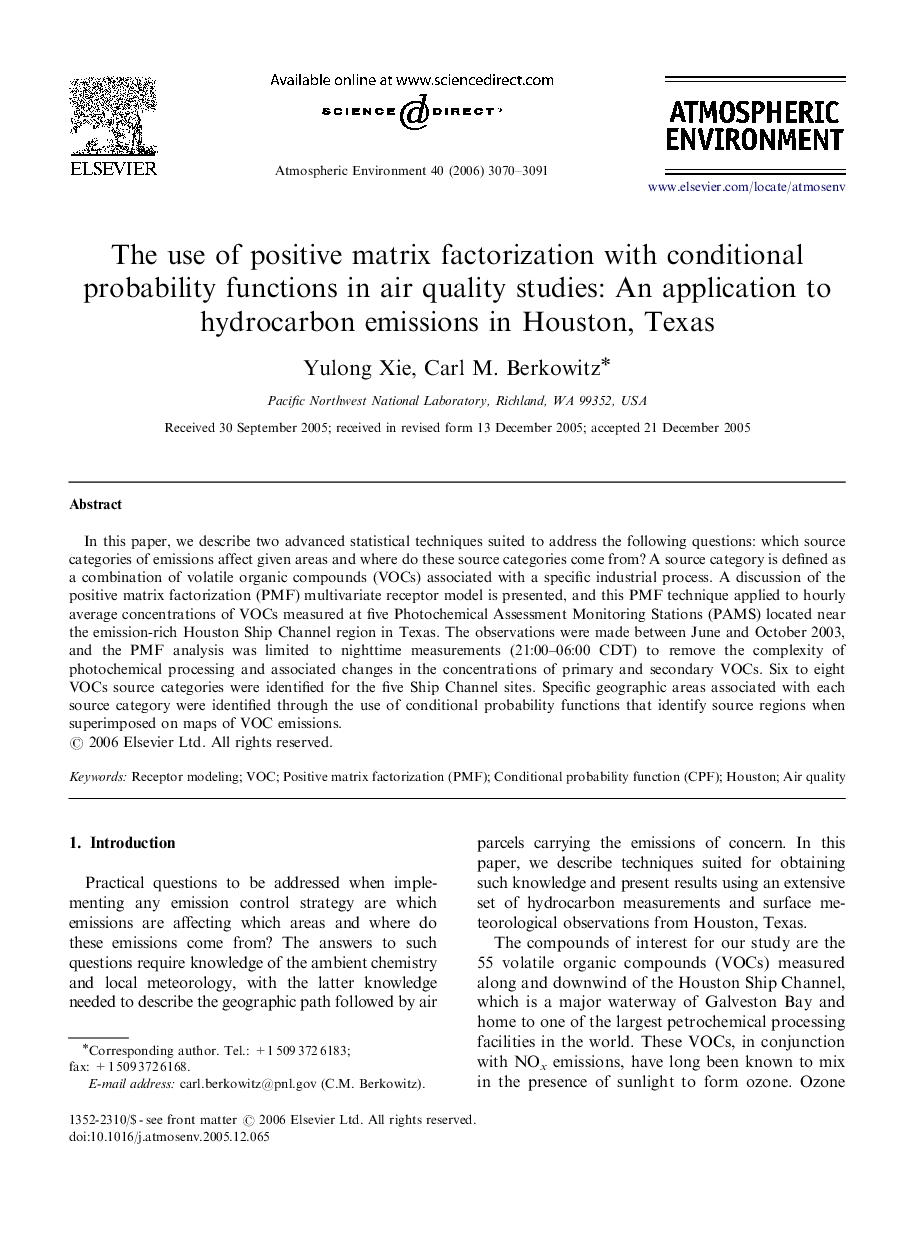| Article ID | Journal | Published Year | Pages | File Type |
|---|---|---|---|---|
| 4444733 | Atmospheric Environment | 2006 | 22 Pages |
In this paper, we describe two advanced statistical techniques suited to address the following questions: which source categories of emissions affect given areas and where do these source categories come from? A source category is defined as a combination of volatile organic compounds (VOCs) associated with a specific industrial process. A discussion of the positive matrix factorization (PMF) multivariate receptor model is presented, and this PMF technique applied to hourly average concentrations of VOCs measured at five Photochemical Assessment Monitoring Stations (PAMS) located near the emission-rich Houston Ship Channel region in Texas. The observations were made between June and October 2003, and the PMF analysis was limited to nighttime measurements (21:00–06:00 CDT) to remove the complexity of photochemical processing and associated changes in the concentrations of primary and secondary VOCs. Six to eight VOCs source categories were identified for the five Ship Channel sites. Specific geographic areas associated with each source category were identified through the use of conditional probability functions that identify source regions when superimposed on maps of VOC emissions.
